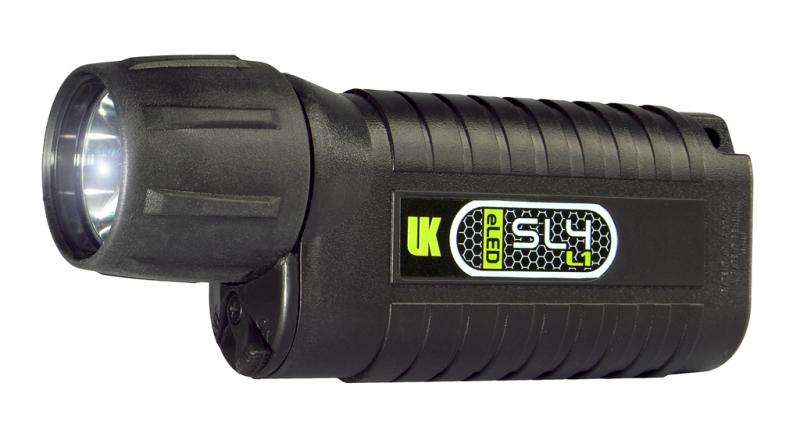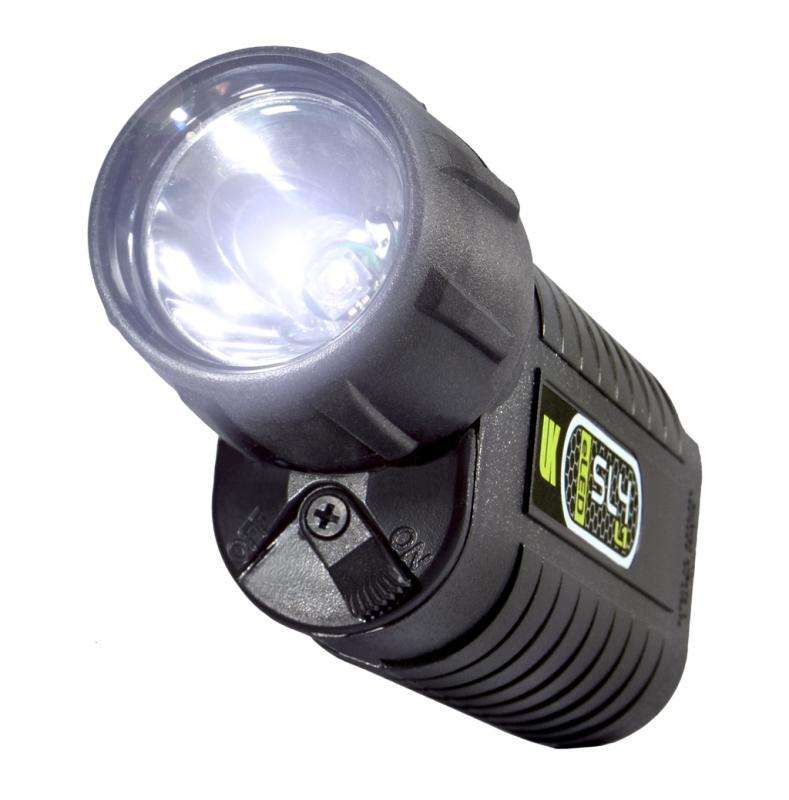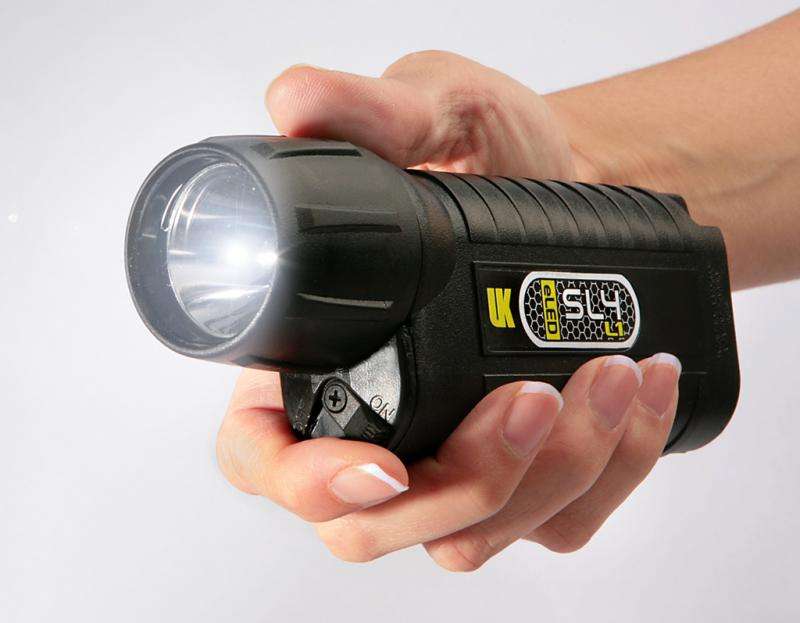1
/
of
3
Underwater Kinetics
Underwater Kinetics SL4 L1 eLED Light
Underwater Kinetics SL4 L1 eLED Light
1.0 / 5.0
(0) 0 total reviews
Regular price
$111.00
Regular price
Sale price
$111.00
Unit price
/
per
Shipping calculated at checkout.
Couldn't load pickup availability
At 400 lumens with 10 hours of burn time, the high intensity LED and incredible battery life of the SL4 eLED (L1) will give you the light you need at work or at play.
With its compact size and narrow penetrating beam, this secondary dive light tops the charts for international dive travel or can be used in a variety of industrial, fire or utility applications that require a lot of light, along with complete waterproof reliability.
NEW- Ultra Violet options available! See the reef like never before!
Features:
Specifications:
Amaze yourself by seeing new colors not normally revealed in the beam of your old tag along dive light. Recently you may have heard that some resorts are beginning to offer what’s called a Fluorescent Dive or “Flo Dive” where night divers are given UV lights that transform the reef into a spectacular show of color, just like the UV posters of yore. This phenomenon is relatively new to divers but, in fact, scientists have been observing this reaction for years. It is only recently that advances in technology have allowed the world of UV to be brought into the mainstream diving industry.

Chemical compounds contained in the tissue of these animals (mostly corals) react to the UV light causing them to fluoresce in brilliant reds, purples and greens. The results can be quite amazing.

This is one of the first comments we hear when talking about Ultra Violet diving but to understand the answer, you have to get a little technical… In the chart below you can see 2 kinds of UV LED lights: A blue version with a wavelength of 455 nm and an ultra violet one with a wavelength of 395 nm. Each has its own set of advantages.

In the beginning of the UV trend, the only lights available fell in the wavelength of about 455 (nm), which, as you can see in the chart above, is still within the spectrum of “visible light”. This light did the job of causing the corals to fluoresce, but it could also create so much visible blue light that it sometimes diminished the impact of the glowing colors. To combat this, divers learned to use a yellow filter which cut back the excess blue, while still allowing the fluorescent colors to shine through. (See example photos below)

Recently, advances in technology have made possible a new version of the UV LED which has a wavelength just outside the spectrum of visible light at about 395 (nm). This LED still causes marine life to put on their fluorescent show but since it is nearly invisible to the naked eye, only the glowing colors are revealed. The reef is still bathed in UV light…you just can’t see it! Bottom line… no yellow filter needed.
With its compact size and narrow penetrating beam, this secondary dive light tops the charts for international dive travel or can be used in a variety of industrial, fire or utility applications that require a lot of light, along with complete waterproof reliability.
NEW- Ultra Violet options available! See the reef like never before!
Features:
- High brightness and extended battery life minimize need to change batteries
- Single-handed switching with thumb or index finger
- LED will not break when dropped and lasts thousands of hours
- Available with both, white and ultraviolet LEDs
- Equally great performance in and out of water for home or work
- Controlled output for constant brightness during battery life
- Rubber sheath molded over bezel to reduce glare and improve impact resistance
- Tough, non-corroding ABS and polycarbonate plastic construction
- Proudly made in the USA
Specifications:
| Dimensions (L W H): | 6.20 in x 1.50 in x 1.70 in 15.75 cm x 3.81 cm x 4.32 cm
|
|---|---|
| LIGHTS SUBCATEGORY: | Waterproof / Search and Rescue |
| BATTERY TYPE: | Alkaline Disposable |
| LAMP TYPE: | eLED |
| BATTERY DESCRIPTION: | 4C Alkaline / LR14 |
| BURN TIME (ALKALINE): | 10 hrs |
| LIGHT OUTPUT (ALKALINE): | 400 lm |
| WEIGHT: | 15.02 oz 425.81 g
|
| BEAM DISTANCE: | 622.00 ft 189.59 m
|
| ENCLOSURE PROTECTION: | IP68 |
| DEPTH RATING: | 500.00 ft 152.40 m
|
| DIVE LIGHTS: | Secondary Dive |
See Corals & Critters Like Never Before!
Amaze yourself by seeing new colors not normally revealed in the beam of your old tag along dive light. Recently you may have heard that some resorts are beginning to offer what’s called a Fluorescent Dive or “Flo Dive” where night divers are given UV lights that transform the reef into a spectacular show of color, just like the UV posters of yore. This phenomenon is relatively new to divers but, in fact, scientists have been observing this reaction for years. It is only recently that advances in technology have allowed the world of UV to be brought into the mainstream diving industry.

How Does It Work?
Chemical compounds contained in the tissue of these animals (mostly corals) react to the UV light causing them to fluoresce in brilliant reds, purples and greens. The results can be quite amazing.

I Heard You Need A Yellow Filter?
This is one of the first comments we hear when talking about Ultra Violet diving but to understand the answer, you have to get a little technical… In the chart below you can see 2 kinds of UV LED lights: A blue version with a wavelength of 455 nm and an ultra violet one with a wavelength of 395 nm. Each has its own set of advantages.

Blue - 455 (nm) LED
In the beginning of the UV trend, the only lights available fell in the wavelength of about 455 (nm), which, as you can see in the chart above, is still within the spectrum of “visible light”. This light did the job of causing the corals to fluoresce, but it could also create so much visible blue light that it sometimes diminished the impact of the glowing colors. To combat this, divers learned to use a yellow filter which cut back the excess blue, while still allowing the fluorescent colors to shine through. (See example photos below)

UV - 395 (nm) LED, No Filter Needed!
Recently, advances in technology have made possible a new version of the UV LED which has a wavelength just outside the spectrum of visible light at about 395 (nm). This LED still causes marine life to put on their fluorescent show but since it is nearly invisible to the naked eye, only the glowing colors are revealed. The reef is still bathed in UV light…you just can’t see it! Bottom line… no yellow filter needed.
Share






